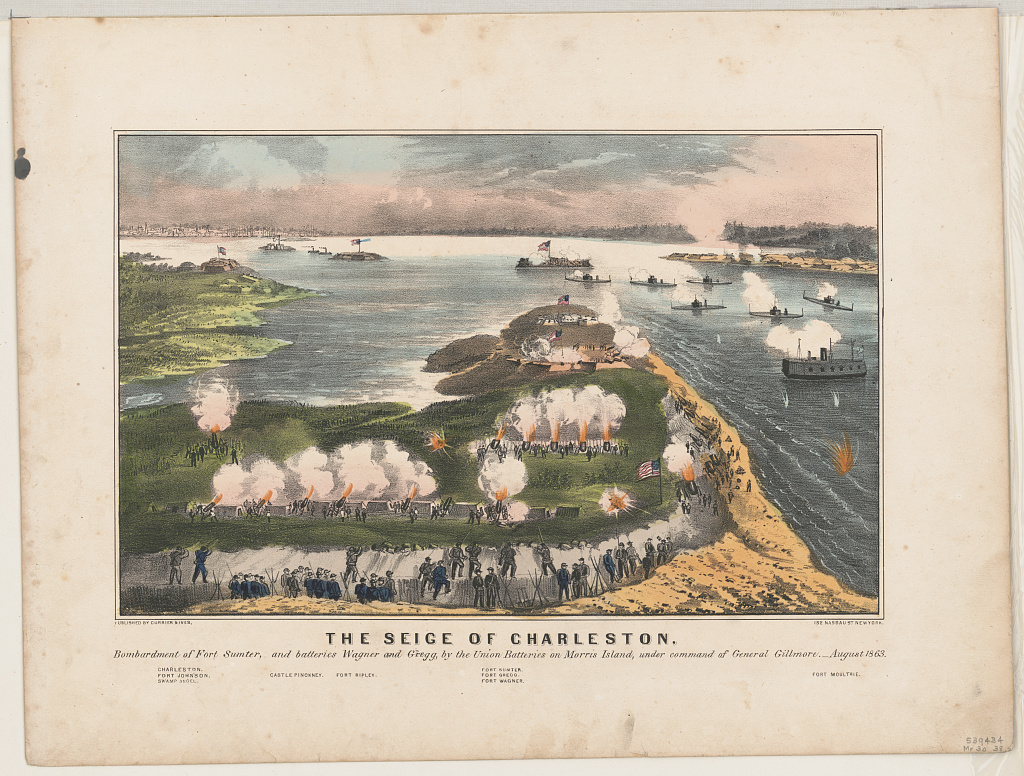Symposium Spotlight: Charleston 1863 – Evaluating Command, Control, and Technology
Welcome back to our yearly spotlight series, highlighting speakers and topics for our upcoming symposium. Over the coming weeks, we will continue to feature previews of our speaker’s presentations for the 2023 Emerging Civil War Symposium. We’ll also be sharing suggested titles that you may want to read in preparation for these programs. This week we feature Neil P. Chatelain.
It was secession’s birthplace and the Confederacy’s second largest city according to the 1860 census. That alone made Charleston, South Carolina, worthy of military action, but the city’s participation in the war only compounded the desire for both sides to control it. In the rebellion’s first half, Charleston received scores of blockade runners bringing in enough weapons to supply an entire field army. U.S. efforts to seize Charleston failed in 1862 at the battle of Secessionville. By 1863 the United States was adamant about closing the port once and for all.
With the pivotal massive campaigns of Vicksburg, Gettysburg, Chickamauga, Chattanooga, Port Hudson, and Chancellorsville also fought in 1863, the Charleston campaign that year is often relegated to secondary importance. Indeed, it involved fewer soldiers than those other battles. This campaign’s importance should not be understated however, as Charleston held critical political, diplomatic, symbolic, military, and naval importance to both sides.
Defending Charleston was General Pierre G.T. Beauregard and Captain John R. Tucker. Beauregard’s brigades manned rings of fortifications, including Fort Sumter where the war began and Battery Wagner on Morris Island. Tucker commanded a squadron of ironclads and improvised wooden war-steamers. If the two could properly coordinate that defense, Charleston might just remain open for blockade runners.
To accomplish the closing and seizure of Charleston, the United States amassed a mighty host. The new ironclad frigate USS New Ironsides served as the flagship for a flotilla of modern Passaic-class monitors. This squadron was initially under the charge of Rear Admiral Samuel Francis Du Pont, but shifted to Rear Admiral John Dahlgren, the navy’s chief ordnance expert. General Quincy A. Gillmore commanded the X Corps, 16,000 men trained in siege warfare. Their cooperation was vital to capturing Confederate positions and closing Charleston to enemy supply lines.
Pioneering ideas, innovative tactics and technologies were implemented that year in the coastal city, including the use of African American soldiers (as highlighted in the 1989 film Glory), ironclad squadrons, underwater mines, landmines, minesweepers, torpedo boats, submersibles, volley guns, amphibious assaults, and even combat photography. 1863 Charleston was a cauldron where the war’s innovations were simultaneously put to the test.
Technology only goes as far as it is used however, and the command structure of both forces at Charleston was even more critical. The geography of the port city along the Atlantic coast meant both military and naval forces would need to cooperate effectively to ensure success. Both sides recognized this in 1863 and changes occurred in both United States and Confederate high commands. The side whose leadership could cooperate and implement new technologies and ideas effectively would successfully control the “queen city” of Charleston.
Find more information and tickets for our 2023 Symposium by clicking here.


Can’t wait to hear this talk, Neil!